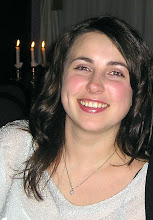Cast Aluminum: By far my favourite choice of them all. Cast aluminum is strong, beautiful and extremely low maintenance. These pieces can be left outside all year (yes, even during the winter, which is great if you're low on storage space), never rust, clean up with mild soap and water and can easily last you upwards of twenty years. There is a multitude of design, size and colour options to suit anyone's taste and needs. Cast aluminum is quite pricey, though. A high quality 5 piece set can run you $2500 and up. But it's such a great investment that it pays for itself. Something to remember: although cast aluminum can be left out all winter, once it's frozen into the snow don't touch it! Well, you can touch it, but don't try to move it, or stack anything onto it. Cast aluminum gets very brittle when it's cold.
 All-Weather Wicker: This is a great product for those who love the look of wicker but know that natural wicker is not a great outdoor choice for our Canadian climate. Made of virgin vinyl, all-weather wicker is durable, fade-proof, comfortable and stylish. The name is a little misleading - the weave itself would be fine in all seasons, but the hollow aluminum frame means the pieces must come in during the winter. This is because if any moisture has accumulated inside the frame it can freeze, expand and crack the aluminum.
All-Weather Wicker: This is a great product for those who love the look of wicker but know that natural wicker is not a great outdoor choice for our Canadian climate. Made of virgin vinyl, all-weather wicker is durable, fade-proof, comfortable and stylish. The name is a little misleading - the weave itself would be fine in all seasons, but the hollow aluminum frame means the pieces must come in during the winter. This is because if any moisture has accumulated inside the frame it can freeze, expand and crack the aluminum. Teak: Teak is such a beautiful and durable wood. A responsible teak dealer purchases plantation-grown Indonesian teak which is sustainable, and carefully controlled to avoid over-harvesting. Teak can be left out all year and is rot and insect resistant. There can be quite a bit of maintenance with teak. If you want to maintain the honey tones of the wood you need to apply a teak oil/sealer about once a year. You also need to lift the previous year's coat by sanding or with a teak cleaner. Failure to do so could cause a build up of the product and black mildew marks to form. If you do not treat your wood it will weather to a beautiful silver-gray. This does not affect the integrity of the wood at all and is only a surface change.
Teak: Teak is such a beautiful and durable wood. A responsible teak dealer purchases plantation-grown Indonesian teak which is sustainable, and carefully controlled to avoid over-harvesting. Teak can be left out all year and is rot and insect resistant. There can be quite a bit of maintenance with teak. If you want to maintain the honey tones of the wood you need to apply a teak oil/sealer about once a year. You also need to lift the previous year's coat by sanding or with a teak cleaner. Failure to do so could cause a build up of the product and black mildew marks to form. If you do not treat your wood it will weather to a beautiful silver-gray. This does not affect the integrity of the wood at all and is only a surface change. Outdoor Fabrics: Most outdoor pieces now come with a wide variety of fabric choices for cushions and umbrellas. 100% acrylic is the best choice for it's fade, mildew and water-resistance. Look for fabrics that have the colour all the way through the fibres (looks the same on the front and back) rather than patterns that are printed only on one side of the fabric. Sunbrella is a widely recognized name in outdoor fabrics and many fabric companies put out fabrics under their own name, but use a Sunbrella base. The cushions should be brought in if you're going to be away for a few days or if it's going to rain, but a little shower is not a big deal. The foam used is meant to drain water quickly. Clean up is easy with a mild soap and the garden hose; just give them a little scrub and rinse the soap right through.
Outdoor Fabrics: Most outdoor pieces now come with a wide variety of fabric choices for cushions and umbrellas. 100% acrylic is the best choice for it's fade, mildew and water-resistance. Look for fabrics that have the colour all the way through the fibres (looks the same on the front and back) rather than patterns that are printed only on one side of the fabric. Sunbrella is a widely recognized name in outdoor fabrics and many fabric companies put out fabrics under their own name, but use a Sunbrella base. The cushions should be brought in if you're going to be away for a few days or if it's going to rain, but a little shower is not a big deal. The foam used is meant to drain water quickly. Clean up is easy with a mild soap and the garden hose; just give them a little scrub and rinse the soap right through.
Pictures courtesy of Hauser Company Stores
1723 Carling Avenue, Ottawa
613-722-8795






